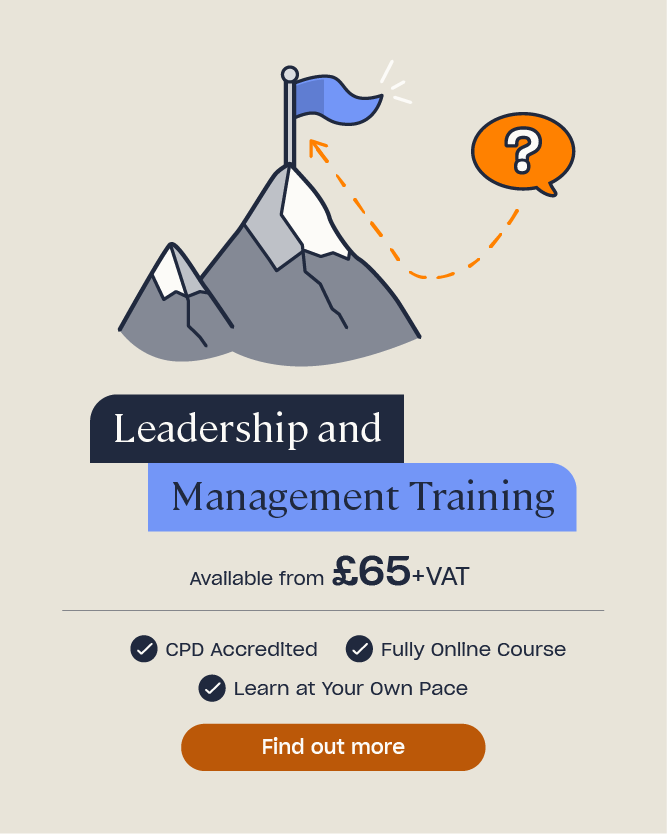Causes of Employee Turnover and Strategies to Reduce it
Employee turnover rate is the term used to describe the percentage of workers that leave a company and need to be replaced within a certain period of time.
People join and leave companies; this isn’t new. There are many reasons why someone could leave your organisation. Some reasons are nothing to be concerned about as they are largely unavoidable. However, if your workers are leaving due to unhappiness at work, or you are constantly finding yourself firing underperforming employees, you have a problem.
Leadership & Management Training
Our Leadership & Management Course is designed for those in management positions who want to elevate their leadership skills and apply them more successfully to their role. Get instant access and start your training today.
Main Causes of Employee Turnover
High employee turnover is taxing. It costs precious time and money and can result in a loss of staff morale. Your reputation could also be tarnished, with people assuming your organisation is a terrible place to work.
Some employee turnover is inevitable. For example, retirement, relocation and leaving for schooling cannot be avoided. But it’s important to monitor your employee turnover and understand why employees are leaving if you want to avoid negative repercussions.
We’ve outlined the 5 main reasons for high employee turnover, and what you can do to stop it.
1. Lack of Growth and Progression
Opportunity for growth and development is very important for retaining good employees. If an employee feels trapped in a dead-end position, they are likely to look towards different companies for the chance to improve their status and income.
2. Being Overworked
It might seem natural that, in periods of economic pressure, you ask your staff to take on extra responsibilities. You might need to let people go and ask remaining employees to pick up the slack by working longer hours or even weekends. But asking workers to choose between their work life and personal life will never sit well. Instead, it will contribute to a higher turnover, as employees grow frustrated.
3. Lack of Feedback and Recognition
If you avoid giving feedback, you might be pushing your employees away. Feedback is the first step to ensuring your employees succeed, so avoiding this process can be detrimental to their success.
If an employee is struggling, your honest feedback can help them manage their workload and refocus. Ignoring the opportunity for feedback, or providing unhelpful feedback, will leave your employee to flounder, become disheartened, struggle and, eventually, give up.
4. Little Opportunity for Decision-Making
Do you micromanage your employees? If so, you’re telling them, ‘I don’t think you can do this properly without me’.
In fact, micromanaging stamps out the opportunity for innovation, which is not what you want. Stifled, over managed employees are likely to grow frustrated with the lack of freedom, which contributes to high turnover.
Instead, trust your employees to perform well – allow them some freedom and you are sure to see their enthusiasm skyrocket.
5. Poor Employee Selection
Finding the perfect employee is difficult, but forcing a match with an employee that is clearly not right for the company culture or values will never end well. Even though you are desperate to fill that position, picking a poorly matched employee is bad for you, your company, and the employee.
No one does their best work when they are unhappy, and an incompatible employee is unlikely to be content with their new position.
Strategies to Reduce Employee Turnover
You will reap substantial economic benefits by reducing the rate of the ‘employee carousel’, and you should make every effort to retain good employees. They are your biggest asset, so investing in their happiness at work is vital for ensuring a successful business.
We’ve outlined some tips below that will help you encourage loyalty from valued employees.

1. Invest in your Employees
Your employees want to know they are a valued part of your team. Play an active part in their professional development to demonstrate you are invested in their success and, in turn, this will increase their company loyalty.
Promoting development will also continually improve your workforce. you’ll increase the capability of your workers and attract new employees.
2. Reward and Compensate your Employees
Employees want to know that their contribution is valued. Make a conscious effort to specifically recognise their successes and reward their efforts. Offering rewards and celebrating all successes may seem unimportant, but it will lead to increased staff loyalty, so it’s worth the effort.
While money might not be the primary reason for high turnover, make sure you pay your employees a fair wage that increases on par with their professional development. Doing so will ensure your employees don’t start searching for a better offer elsewhere.
3. Perfect your Selection Process
Perfecting your interview process can be hard. However, the time and effort needed to get it right will lead to a big payoff, as you’ll be able to weed out unsuitable employees with ease.
To ensure you get the right candidates:
- Define the role clearly. Before advertising for a job, you need to establish the skills that the successful candidate must possess. Sifting through unqualified applicants is a waste of time and money. By clearly defining the job role, you’ll target the right people and quickly dismiss unqualified applicants.
- Clarify whether the candidate has the desired skills and knowledge. Engage your candidates in role-playing or practical testing to assess their competency. You can also understand more about their thought process by asking questions designed to understand how they would react in various ‘on-the-job’ situations.
- Ensure that the candidate fits the company culture. Use the interview stage to probe more deeply into an applicant’s behaviour, values and outlook, and assess how well they interact with the interviewer. Steer clear from ‘yes’ or ‘no’ questions (known as ‘closed questions’). Open questions help you uncover your applicant’s true feelings. Some good open questions to use are:
- “What type of company culture do you feel you’d thrive in?” Not only is this question good at determining if your company culture fits with an applicant’s values, it shows if they have done their research. A proficient applicant will say why they’d thrive in your company culture and will provide examples of what they have achieved in a similar environment.
- “Can you give me an example of when you worked well as part of a team?” If teamwork is a core value and an applicant struggles to provide a decent example, are they going to fit in well?
- “How do you like to be managed?” Would they be happy working under your management style?

4. Provide Considerate and Thorough Feedback
Providing appropriate, well-considered feedback is a major contributor to ensuring success. Feedback helps an employee to reflect on their performance, acknowledge areas for improvement, and develop their skills. Skipping the opportunity to provide your workers with feedback hinders your company’s growth and may lead to your employees turning elsewhere.
5. Ensure a Good Work-Life Balance
Balance is important. If your employees are bogged down with work, they are going to be unhappy. Encourage all your employees to take their full lunch break, and ensure their workload is manageable enough that they aren’t forced to stay late or start early all the time.
It is also important to consider all your employees. Social outings with work are important to promote positivity and a good working environment between colleagues, but consider the kind of social outings you choose carefully.
Are you always choosing a bar or pub, when some staff members don’t drink? Perhaps you could switch it up and go for a meal instead. Find outings that the whole workforce enjoys, so everyone’s eager to participate.
What to Read Next:
- Conducting a Disciplinary Hearing: Guide for Employers
- Disciplinary and Grievances Training
- Understanding the Different Types of Group Conflict: A Guide for Managers
- Employee Turnover in Hospitality: Causes and Retention Strategies
- Rest Breaks at Work: What are the Requirements?











